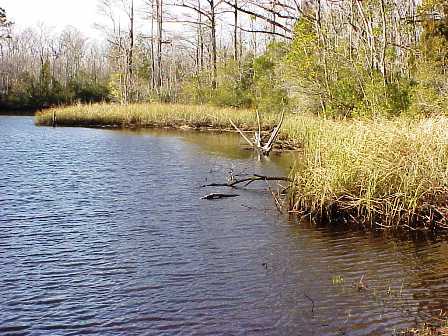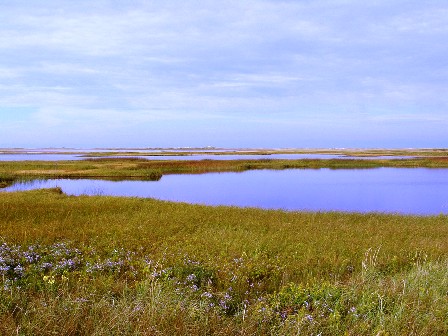Florida Ecosystems: Fresh Water Marshes
The largest freshwater marsh is the famous
Everglades in the southeastern
part of the state. Coined the River of Grass by the matriarch of the
Everglades, Marjory Stoneman Douglas, the habitat is now considered on
of the most imperiled in the country. Decades of attempts to drain the
swamp and make it of some use to man has left the system in a
dysfunctional state.
Freshwater marshes are generally wetlands with an open expanse of grasses and other grass-like plants. Freshwater marshes generally contain few, if any, trees and shrubs. Marshes have standing water for much of the year and act as natural filters. As water passes over the marsh, water flow is slowed down, and suspended particles settle out. Like the state's freshwater swamps, water levels fluctuate in the marshes. From June through September daily rains the marshes have standing water. From October to December of January, when the rainfall amounts are very low, the standing water gradually flows towards the coast or seeps into the porous ground. By February and continuing through the end of May, many marshes are completely dry. This makes them susceptible to fires.
Fresh Water Marshes are part of the Freshwater Wetlands and Aquatic Ecosystem. Florida has both the largest freshwater lake and the largest freshwater spring (Wakulla Springs) in the contiguous United States. This makes Florida a very rare state with a lot of aquatic diversity, from the mangroves that prevent erosion to the swamps and marshes that naturally filter our water. Most of the marshes in Florida occur south of Orlando. Before the boom years of the early and mid 1900s, Freshwater marsh habitats flourished along the St. Johns and Kissimmee Rivers and in scattered spots in central Florida. Many of these sites are now gone or severely altered, victims of development.
Freshwater marshes are generally wetlands with an open expanse of grasses and other grass-like plants. Freshwater marshes generally contain few, if any, trees and shrubs. Marshes have standing water for much of the year and act as natural filters. As water passes over the marsh, water flow is slowed down, and suspended particles settle out. Like the state's freshwater swamps, water levels fluctuate in the marshes. From June through September daily rains the marshes have standing water. From October to December of January, when the rainfall amounts are very low, the standing water gradually flows towards the coast or seeps into the porous ground. By February and continuing through the end of May, many marshes are completely dry. This makes them susceptible to fires.
Fresh Water Marshes are part of the Freshwater Wetlands and Aquatic Ecosystem. Florida has both the largest freshwater lake and the largest freshwater spring (Wakulla Springs) in the contiguous United States. This makes Florida a very rare state with a lot of aquatic diversity, from the mangroves that prevent erosion to the swamps and marshes that naturally filter our water. Most of the marshes in Florida occur south of Orlando. Before the boom years of the early and mid 1900s, Freshwater marsh habitats flourished along the St. Johns and Kissimmee Rivers and in scattered spots in central Florida. Many of these sites are now gone or severely altered, victims of development.



Comments
Post a Comment